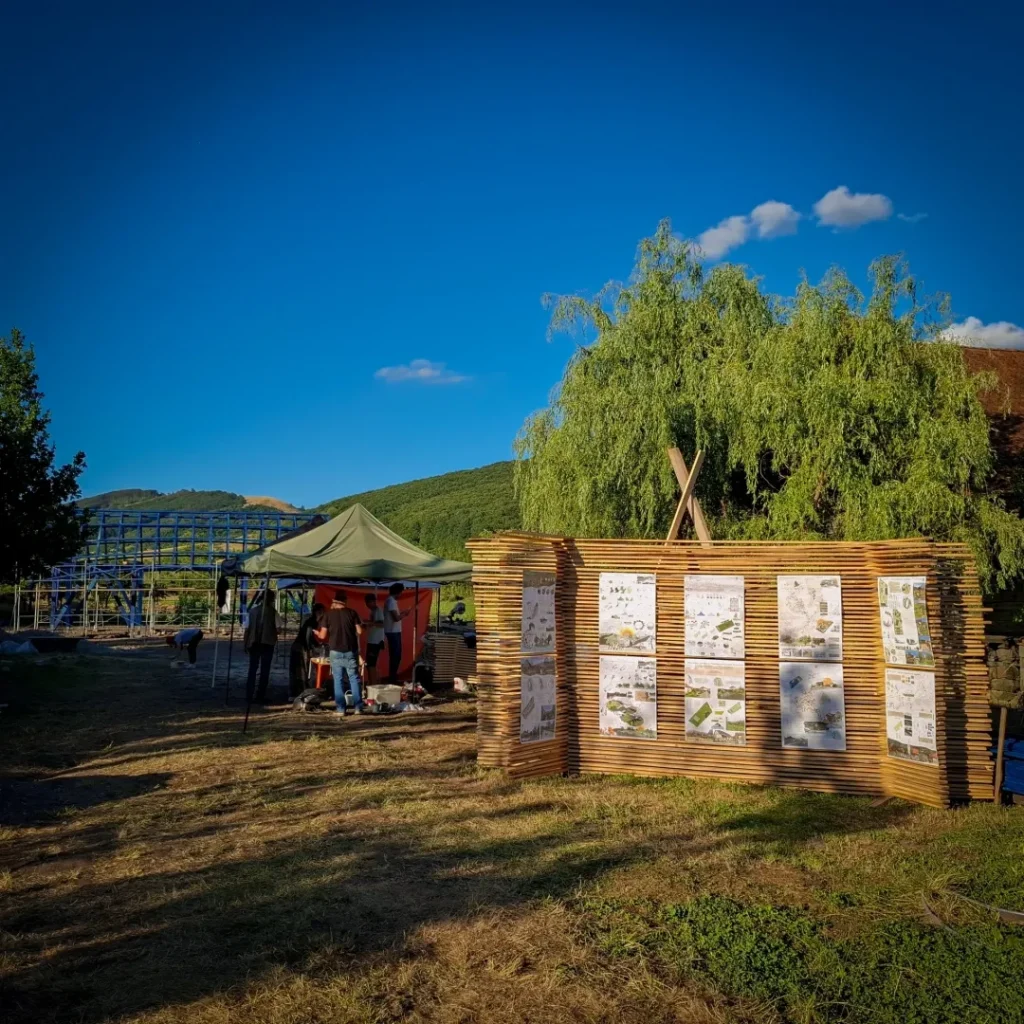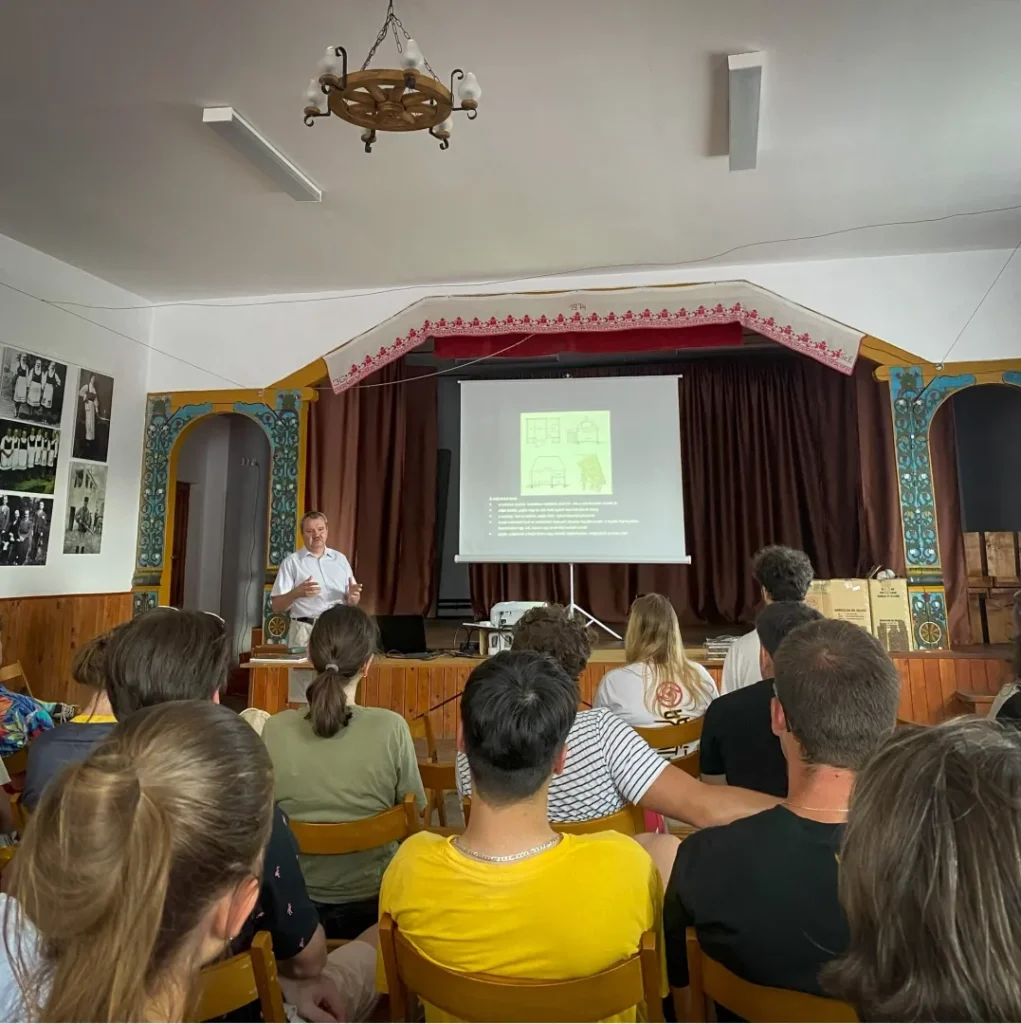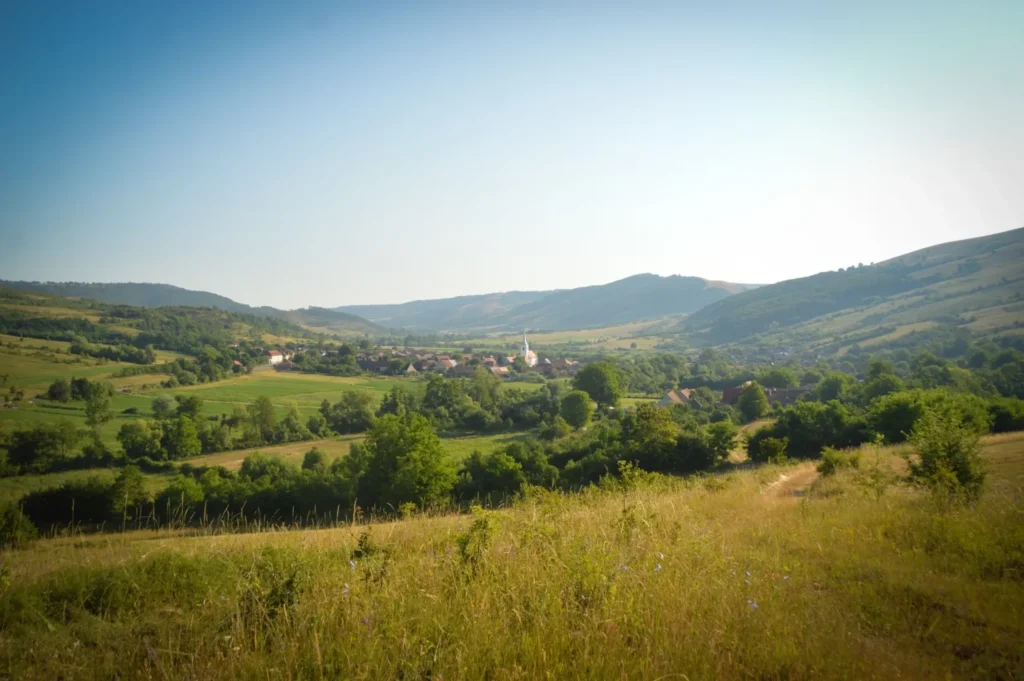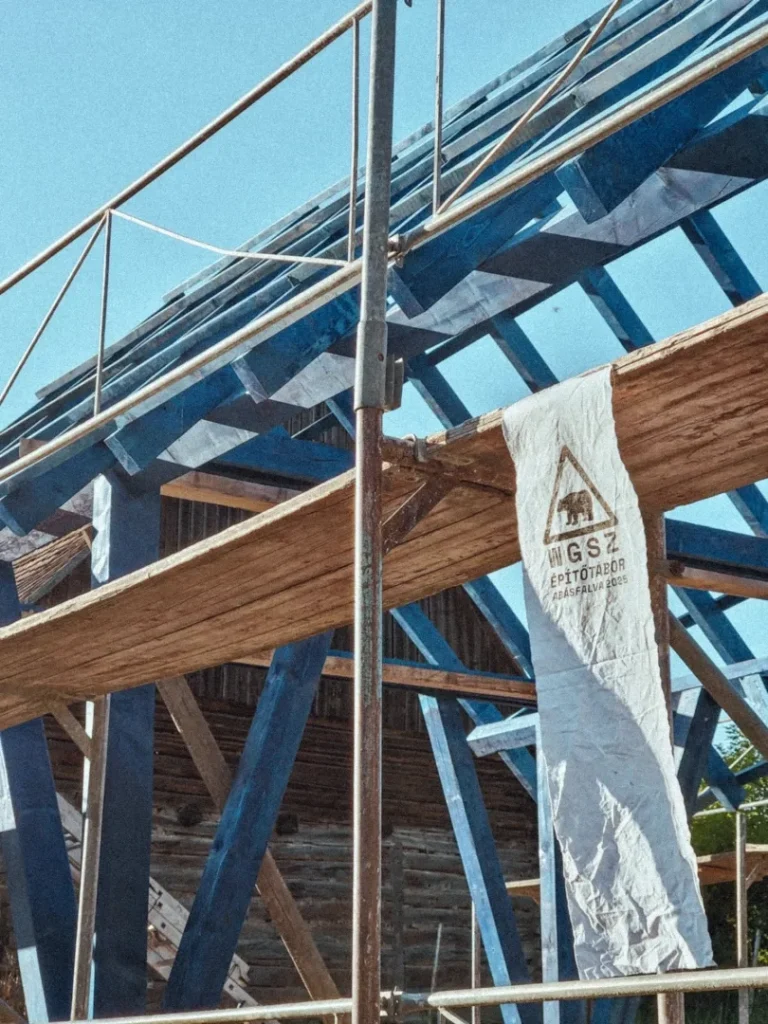Created: 2025.09.08. 15:50
An architectural camp was held in Abásfalva, a village in Szeklerland, with the support of the Pannónia Scholarship Programme, where students of Széchenyi István University’s Winkler Gábor Engineering College for Advanced Studies built an open community pavilion. The young people of the Faculty of Architecture, Civil and Transport Engineering of the Győr-based institution achieved great success with their wooden structure, which was inspired by traditional folk style yet bears a contemporary appearance.
Széchenyi István University places special emphasis on nurturing student talent, as demonstrated by the high-level activities of its numerous colleges for advanced studies. One such self-organised student community, the Winkler Gábor Engineering College at the Faculty of Architecture, Civil and Transport Engineering, displayed extraordinary professional motivation: from autumn 2024 they prepared for a large-scale building camp, the result of which was the construction of a community pavilion in Abásfalva, Hargita County, this summer.
The idea originated from Kristóf Nagy, a fifth-year architecture student, who conceived the plan of a Transylvanian building camp during his internship in Csíkszereda. His mentor, architect Győző Esztány, connected him with architect Ildikó Márton – a scholarship holder of the Hungarian Academy of Arts with roots in Abásfalva and Homoródkeményfalva. “I had long sought a link with Széchenyi István University, so I was delighted when Kristóf approached me with this opportunity. The locals had been wishing for a community space for a long time, so the needs coincided from the outset,” explained Ms Márton. She added that she found it unique that the students, in a self-organised manner, undertook the tasks of construction without shying away from difficulties.

Students of the Faculty of Architecture, Civil and Transport Engineering of Széchenyi István University worked throughout the academic year on the design and implementation of the Abásfalva community pavilion. (Photo: Tibor Kottmayer)
Preparations began in the autumn with the support of the University, the faculty leadership and the Department of Building Design. Thanks to this, the students could prepare for the camp within the framework of a special course, with future architects and civil engineers working in five groups on the plans. “The work was assisted by departmental engineers Dániel Ungerhofer and Júlia Fátrai as consultants, who oversaw both the design and implementation process,” explained Kalliszta Horváth, student board member of the college and one of the main organisers of the camp. She added that the project – realised with the support of the Pannónia Scholarship Programme – also involved landscape architecture students from the Sapientia Hungarian University of Transylvania and members of the B2 College for Advanced Studies of the University of Pécs.
An important milestone before the two-week summer construction was the three-day site visit in February, during which the students familiarised themselves with local conditions and established good relations with the community. “Two cornerstones of architectural training at Széchenyi University are thorough knowledge of the site and the preparation of a tangible model of the plan. With these in mind, the site visit was given great importance, providing huge momentum for the design work,” said Tibor Kottmayer, master instructor at the Department of Architectural History and Urban Studies and programme director of the Winkler Gábor Engineering College.
Kristóf Nagy explained that throughout the process they ensured that professional lectures complemented the design and construction, involving the local architectural community. “One of the most important moments of the preparatory visit was the roundtable discussion, which allowed for the reconciliation of plans and needs among those involved. Here we discussed with locals how they imagined the building, and what we could contribute professionally,” he detailed. This consultation evolved into remarkable cooperation: local entrepreneurs – contractors, carpenters, caterers – supported the team in numerous ways, contributing to the realisation of the pavilion located in the courtyard of the so-called ‘Horváth House’. The group also created an outdoor table, while landscape architecture students from Marosvásárhely built a bench in Homoródkeményfalva, and energy was even found to restore the monument in the yard of the Unitarian church in Abásfalva.

At the topping-out ceremony, representatives of both the local community and the profession were present in large numbers. (Photo: Szilárd Gergely)
The commitment of the young people from Győr proved particularly inspiring for the community, further strengthened by events such as an open-air cinema organised during the camp. “The locals were completely invigorated by that typically ‘Abásfalva’ blue wooden structure, whose roof evokes a fluttering skirt. The students managed to create a work that they too can be genuinely proud of,” emphasised Ildikó Márton. She added that she considers the emotional attachment formed through this creative work to be invaluable, as it will tie the young people to the village for life.

The students, contributors and residents alike can be justly proud of the completed structure. (Photo: Szilárd Gergely)
The success of the building camp quickly spread within professional circles: Csaba Jakab, professor at the Department of Building Design, invited his students to present the unique project results at one of the programmes of the Valley of Arts Festival. “At the 2014 Venice Architecture Biennale, a project similar to the Abásfalva camp – collective construction rooted in folk architecture, the Carpathian Basin kaláka model – was the focus of the Hungarian Pavilion, in which I also took part. As a native of Székely Land, I was particularly glad that the college members chose Abásfalva as the camp’s location,” he highlighted. “Although I was only a supporter of the project, it filled me with great pride to be present at the topping-out ceremony. The students did such good work that neighbouring settlements are all inviting them back with different opportunities. This is a sensational success, confirmed also by the feedback received at the professional meeting held within the framework of the Valley of Arts.”











